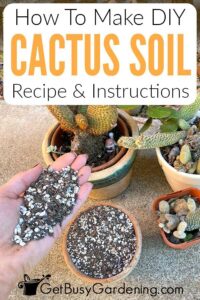Have you ever wondered how plants grow so tall and strong, like the trees in your backyard or the flowers in the garden? Just like us, plants need food to thrive. But what do plants eat? It all boils down to three key ingredients found in something called NPK fertilizer. Let’s unpack this little secret to plant happiness, shall we?
The Magic of NPK
NPK stands for nitrogen (N), phosphorus (P), and potassium (K). These three nutrients are like the superhero trio for plants. They each play a unique role, and when combined, they promote healthy growth and vibrant colors. Think of NPK as the balanced diet for plants, where each component fulfills an essential purpose.
Nitrogen, the first hero, is primarily responsible for leaf and stem growth. It helps plants build proteins and chlorophyll, which is the green pigment that allows them to absorb sunlight. Imagine nitrogen as the energy drinks of the plant world, giving them the boost they need to grow fluffy green tops.
Next is phosphorus, the brainiac of the team. It is crucial for developing strong roots and flowers. Phosphorus helps plants convert sunlight into energy, which is essential for their survival. The roots need to dig deep to find water and minerals. Strong roots lead to secure plants that can stand tall against wind and rain.
Last but not least is potassium. Potassium supports overall plant health and improves their resilience to stress. It helps plants regulate water and encourages the development of fruits and flowers. Consider potassium the plant’s personal trainer, ensuring it can withstand the big storms or dry spells of the season.
How NPK Works Together
When it comes to plant nutrition, balance is key. Too much nitrogen can lead to lush foliage but may result in fewer flowers and fruit. On the other hand, an excess of phosphorus could cause unhealthy growth patterns, while too little potassium may leave plants vulnerable to disease. Each nutrient performs its job best when balanced with the others. So, just as a well-rounded meal benefits us, a perfect blend of NPK helps plants flourish.
Understanding Fertilizer Labels
When you stroll down the garden center aisle, eager to pick out the right fertilizer, you will notice numbers on the package, usually in the format of N-P-K, like 10-10-10 or 5-10-15. Each number corresponds to the percentage of nitrogen, phosphorus, and potassium, respectively. When you see 10-10-10, that means the fertilizer contains an equal amount of all three nutrients, which is often ideal for general use.
If you’re primarily focusing on flowering plants, look for higher phosphorus content—like a 5-20-10 mix—to encourage blooms. Alternatively, if you’re nurturing leafy vegetables, you might prefer a fertilizer with higher nitrogen, such as a 20-10-10 blend. Understanding these numbers allows gardeners of every skill level to pick the perfect fuel for their beloved plants.
The Journey of Plant Food: From Soil to Stem
Now, let’s take a moment to think about how these nutrients get into the plants. It all starts in the soil. When fertilizer is applied, it dissolves in water, allowing the nutrients to mix with the moisture. As plants absorb water through their roots, they simultaneously take in these vital nutrients. It’s like the plants are sipping on a nutritious drink every time they open their tiny root hairs to the water below.
Roots then transport these nutrients up through the plant, reaching the leaves, flowers, and fruit, where they are most needed. This systemic movement is akin to a well-coordinated relay race. Each team member—root, stem, leaf—has a specific role in ensuring that every part of the plant receives the sustenance required for growth.
Natural vs. Synthetic Fertilizers
When choosing the right fertilizer, gardeners often grapple with the choice between natural and synthetic options. Natural fertilizers come from organic sources, such as compost, manure, or bone meal. They tend to release nutrients slowly, enriching the soil over time. This is more akin to a leisurely stroll in a leisurely garden rather than a sprint.
Synthetic fertilizers, on the other hand, are chemically manufactured. They provide quick release characteristics, delivering an immediate punch of nutrients to desperate plants. While both types have their pros and cons, understanding your plants’ needs and your gardening style will help you make the right choice.
The Bottom Line: Love Your Plants
In the end, nurturing plants is much like building a relationship; it requires understanding, patience, and balance. Understanding NPK gives you the tools to make informed choices about how to feed your leafy companions. Whether you have a vast garden or a solitary potted plant on your windowsill, giving them the right nutrients will promote their growth and beauty.
As you continue your journey in gardening, remember: a well-nourished plant is a happy plant. Embrace the magic of NPK and watch your garden thrive! By fueling your plants with the right balance of nutrients, you not only cultivate life but also garner a beautiful spectacle of nature, one leaf at a time.





Leave a Comment